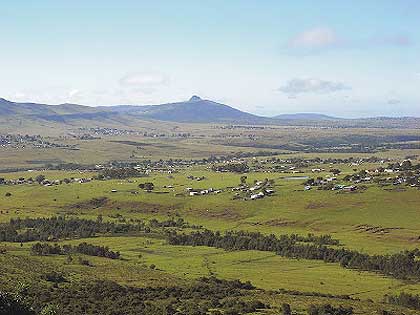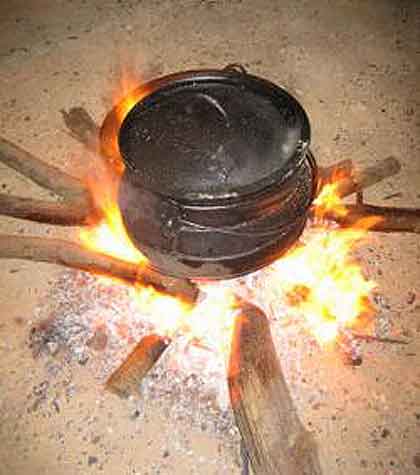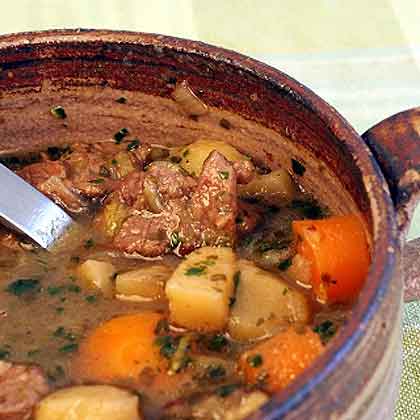Mutton Casserole
Traditional Mutton Casserole
Mutton the Traditional Way – With Samp and Beans
Today’s traditional African mutton recipe comes from the Xhosa people of the Eastern Cape Province of South Africa where Nelson Mandela and his family come from; by tradition, an area reaching from the foothills of the Drakensberg to the shores of the Wild Coast. Today, many Xhosa live in homesteads, grouped in villages, along this south eastern coastline.
This is one of the traditional African mutton recipes that has stood my personal test of time; another of the tasty old favorites I make often. The straightforward ingredients are easy to remember, the method is very basic and the comfort factor is huge. Homesick Africans, enduring other less salubrious climates, sometimes need a little comfort…
Not sure how this will fit into your summer meal plans ‘cause it’s more of a mutton stew, but I make it in the crock-pot (my “too-busy-girl” way) where it cheerfully cooks away while other things are happening. If you brown everything well in the oil, then dump it all into the crock-pot, you get the flavor and a cool clean kitchen. All those nutrient rich juices will have browned in the bottom of the pan so use a little boiling water to get the browned bits off the pan and into the crock-pot too.
The only concessions I make to our westernized taste buds is using lamb (lamb, not ram) rather than the more strongly flavored mutton. Alice, who showed me the original method, told me her mother always used young goat. This particular recipe makes a perfect subject for cooking over coals in the cast-iron, three-legged pot (traditional method) but you have to watch out that the heat isn’t too high. This is why wooden sticks are used so they can be pulled back to cool down the pot.
The valuable, scrumptious mutton gravy is made by the flavors of the simple ingredients and oil slowly simmering together and if it boils dry, water has to be added and the taste is weakened. Crock-pot cooking is a really good method if you don’t have the time to watch the proceedings closely. The long slow cooking encourages the formation of luscious juices and the heat is regulated so it won’t burn.
The picture shows the mutton dish tweaked to include potatoes and some chopped parsley…yummy but not so traditional.
Inyama Yegqusha
4 Tblsp (60 ml) oil (sunflower, canola or peanut will work)
1 kg (2.2 lbs.) mutton pieces
4 medium onions, chopped
500 g (1 lb) carrots, sliced
2 large tomatoes, chopped
Salt and pepper to taste
125 ml (½ C) flour – I have sometimes used cornflour (Maizena)
Small quantity water
Conversion Table
Heat oil until slightly hazy and brown the mutton well, (at this point you can put everything in the crock-pot – see above). Add the onions, carrots, tomatoes and season to taste. Simmer gently for 45 minutes or until meat is cooked and tender (a few hours in a low crock-pot). Mix flour with a little water to form a paste and add to casserole. Continue to simmer until thick and adjust the seasoning. Make sure the flour is thoroughly cooked through then serve.
Traditionally the above dish is served with umngqusho, recipe as below. I usually serve it over rice (b’cuz it’s in the freezer already and quick to microwave) or baked potatoes, but for those wanting authentic, this is the way to go.
Umngqusho (Samp and Beans)
This is apparently Nelson Mandela’s favorite dish.
To make; take 1½ Cups Samp* and 1½ Cups Beans – Mix samp* and sugar beans socked in salt water.
Soak the samp and beans overnight in clean water. The next day: Pour off the old water and rinse well, place the samp and beans in a pan and cover with water, add salt and bring to the boil. Cook over low heat for about two hours, checking the water level and adding more if the mixture gets dry. Simmer until the samp and beans are tender. You can stir through a bit of butter, if desired. So that’s the whole Inyama Yegqusha/ Umngqusho recipe in one. Have fun cooking and eating.
*Samp: Samp is made from maize kernels that have been stamped and broken but not ground as fine as maize-rice or maize meal. Ready mix packets of samp and sugar beans can be bought from supermarkets. If these are not available, you can mix samp and sugar beans in equal quantities.



